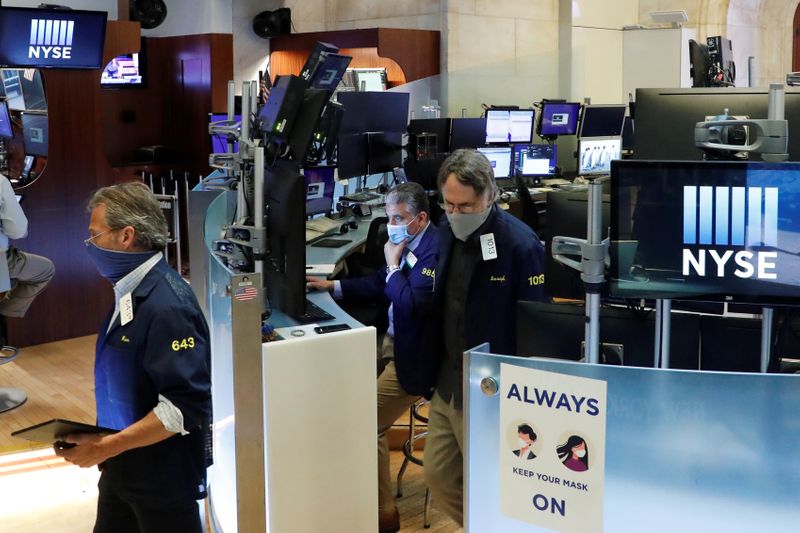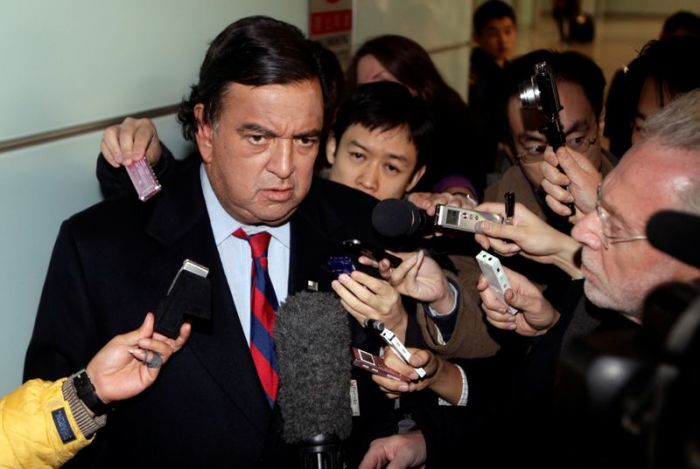(Reuters) – The S&P 500 ended higher on Friday as investors weighed the prospect of more fiscal stimulus against fears of further business disruptions due to a record rise in COVID-19 cases.
Netflix tumbled 6.5% after the video streaming service forecast slower-than-expected subscriber growth during the third quarter, pulling the communication services sector down 0.4%.
The S&P 500 utilities, real estate and healthcare indexes were the session’s strongest gainers.
However, a 1.5% drop in Goldman Sachs helped keep the Dow in negative territory.
For the week, the S&P 500 and the Dow rose 1.2% and 2.3%, respectively, after optimism over an eventual coronavirus vaccine and hopes of a post-pandemic economic recovery helped investors look past a continuous surge in COVID-19 cases. The United States witnessed 77,000 new infections on Thursday.
The Nasdaq ended 1.1% lower for the week as investors sold shares of high-flying companies including Microsoft Corp and Amazon.com Inc and moved into cyclical sectors.
Graphic showing each S&P 500 component’s performance for the week https://graphics.reuters.com/USA-STOCKS/WEEK/rlgpdldzdpo/
Next week, second-quarter earnings season shifts into high gear with reports expected from corporate heavyweights including Microsoft, Tesla, Intel and Verizon Communications.
With this year largely written off as a disaster for U.S. corporations because of the coronavirus, investors are looking for information from companies about the potential size and timing of an eventual recovery.
“The question is what 2021 and 2022 look like, and what can folks glean from the commentary, especially when companies have withdrawn their guidance and made it difficult to get a sense of what their prospects look like,” said Tom Hainlin, National Investment Strategist at U.S. Bank Wealth Management.
The Cboe Volatility Index, known as Wall Street’s “fear gauge,” ended at 25.68, its lowest closing level since June 5.
The Dow Jones Industrial Average fell 0.23% to end at 26,672.36 points, while the S&P 500 gained 0.29% to 3,224.75.
The Nasdaq Composite climbed 0.28% to 10,503.19.
Unprecedented stimulus measures and improving economic data have helped the S&P 500 rise to within about 5% of its February record high.
Investors are also hoping for more fiscal support as a program that offers additional unemployment benefits is set to expire on July 31. The U.S. Congress will return to Washington on Monday to debate another coronavirus aid bill.
“Both Republicans and Democrats have a strong incentive to agree upon further pre-election stimulus. It’s not a matter of ‘if’ a stimulus passes, it’s just what the size and content of that package looks like,” said Andrea Bevis, senior vice president, UBS Private Wealth Management, based in Boston.
BlackRock Inc, the world’s largest asset manager, rose 3.7% after reporting a jump in quarterly profit as investors poured money into its fixed-income funds and cash management services.
Volume on U.S. exchanges was 9.5 billion shares, compared with the 11.6 billion average for the full session over the last 20 trading days.
Advancing issues outnumbered declining ones on the NYSE by a 1.43-to-1 ratio; on Nasdaq, a 1.50-to-1 ratio favored advancers.
The S&P 500 posted 39 new 52-week highs and no new lows; the Nasdaq Composite recorded 89 new highs and 11 new lows.
(Reportig by Noel Randewich; Additional reporting by Devik Jain and Medha Singh in Bengaluru; Editing by Marguerita Choy)


























